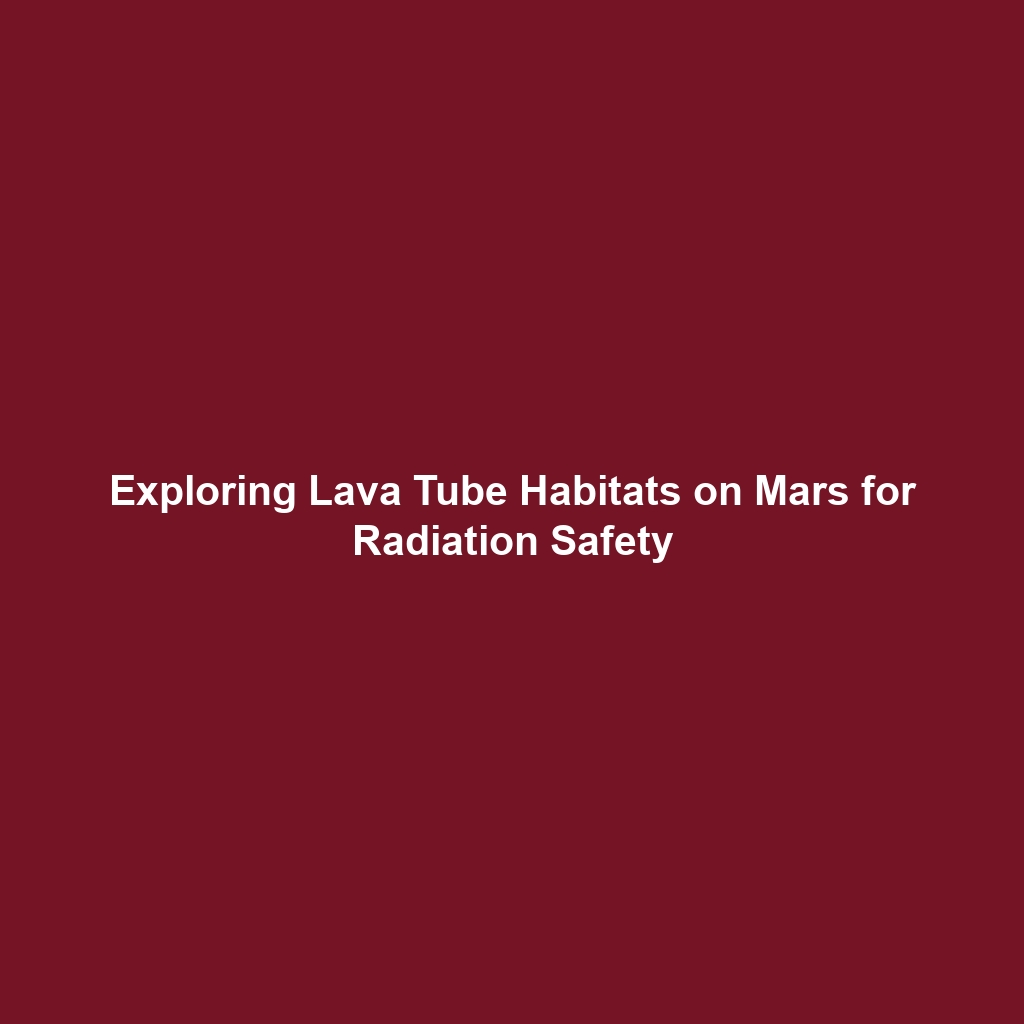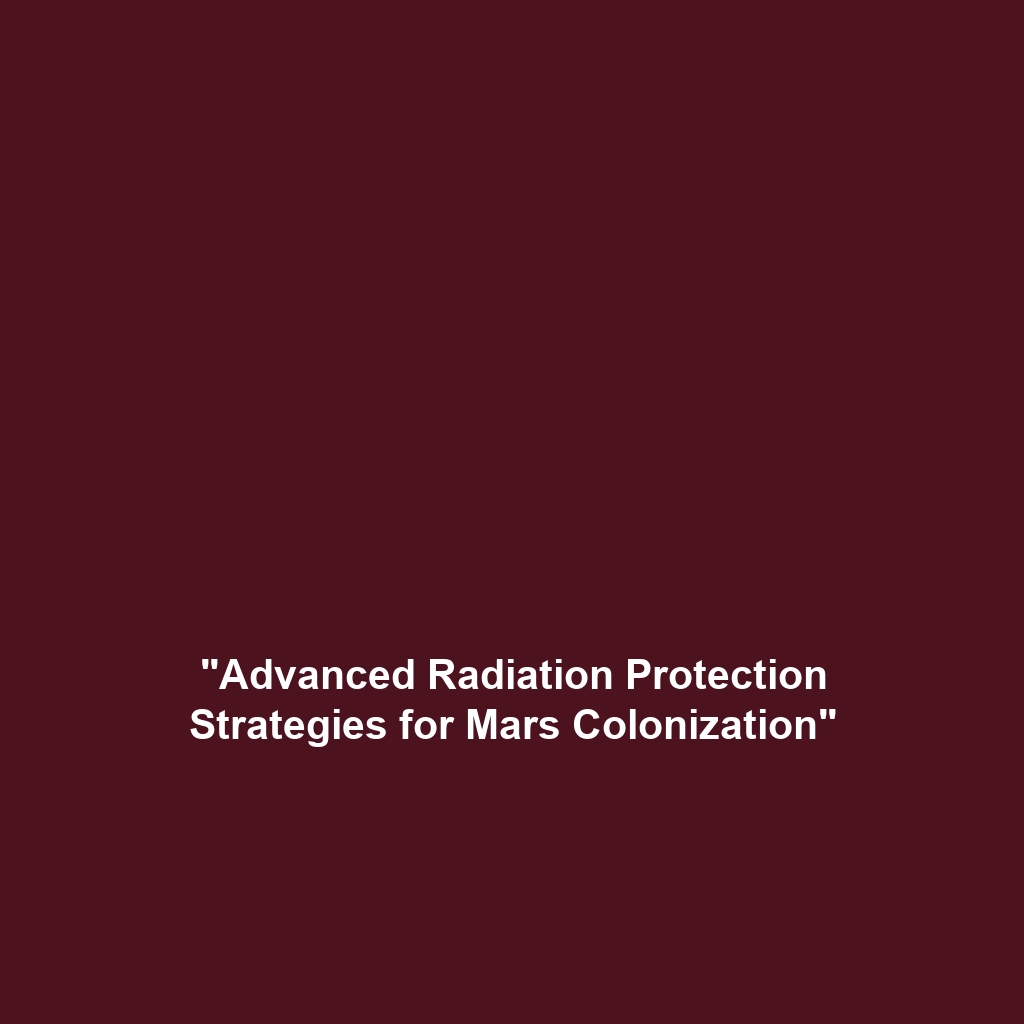Underground or Lava Tube Habitats: Exploring Radiation Protection for Colonizing Mars
Introduction
As humanity sets its sights on the red planet, the concept of Underground or Lava Tube Habitats emerges as a critical consideration for ensuring safety and sustainability during colonization efforts. The unique geological formations on Mars, particularly lava tubes, offer promising potential for protecting inhabitants from harmful radiation—one of the major challenges posed by the Martian environment. With rising interest in colonizing Mars, exploring the significance of underground habitats is crucial for future missions and long-term survival on the planet.
Key Concepts
Underground habitats, particularly those formed within Martian lava tubes, provide several advantages in terms of radiation protection and environmental stability. Below are the major concepts related to this topic:
Radiation Mitigation
Lava tubes can shield colonizers from cosmic radiation and solar flares due to their thick basalt walls, significantly reducing exposure levels.
Temperature Regulation
The subterranean environment of lava tubes maintains a more stable temperature, which can reduce energy demands for heating or cooling.
Resource Utilization
Accessing underground water resources and utilizing local materials for construction can promote self-sufficiency in Martian habitats.
These concepts directly align with colonizing Mars, as they highlight the fundamental principles essential for creating a sustainable human presence on the planet.
Applications and Real-World Uses
The practical applications of Underground or Lava Tube Habitats in the context of colonizing Mars are significant:
- Establishing Research Stations: Utilizing lava tubes for scientific research to study Martian geology, atmosphere, and potential for life.
- Building Permanent Living Quarters: Creating habitats that serve as homes, laboratories, and resource centers for future astronauts.
- Emergency Shelters: Designing safe zones to protect against radiation exposure during solar events.
These applications illustrate how underground habitats can provide critical support to colonizing Mars.
Current Challenges
Despite the promising advantages, there are several challenges associated with exploring and implementing Underground or Lava Tube Habitats:
- The Unknown Terrain: Limited knowledge of Mars’ subsurface terrain poses risks for exploration and habitation.
- Mining and Construction: Difficulties in utilizing local materials due to Martian conditions and technological limitations.
- Environmental Stability: Ensuring that lava tubes can maintain structural integrity while being adapted for human habitation.
These are key issues in both the study of underground habitats and colonizing Mars.
Future Research and Innovations
Innovations in technology and research are vital for advancing the feasibility of Underground or Lava Tube Habitats. Noteworthy advancements include:
- Robotic Exploration: Utilization of autonomous drones to map and analyze potential lava tube sites.
- Advanced Materials: Development of new materials that can reinforce habitats while minimizing weight and maintaining flexibility.
- Radiation Measurement Technologies: Innovations in detecting and mitigating radiation exposure risks effectively.
Such innovations will significantly impact the future of colonizing Mars and enhance the safety of Martian habitats.
Conclusion
In exploring underground or lava tube habitats for radiation protection, we uncover a critical pathway toward sustainable living on Mars. These habitats not only offer protection from harsh conditions but also serve as the foundation for future colonization efforts. The road ahead entails addressing existing challenges while fostering innovations that will pave the way for human life on the red planet.
As we continue to conduct research and develop technologies in this field, staying informed on related topics and advancements will be essential for aspiring Martian settlers.
This article is structured to be SEO-optimized and effectively communicates important details on underground habitats for potential colonization of Mars.

